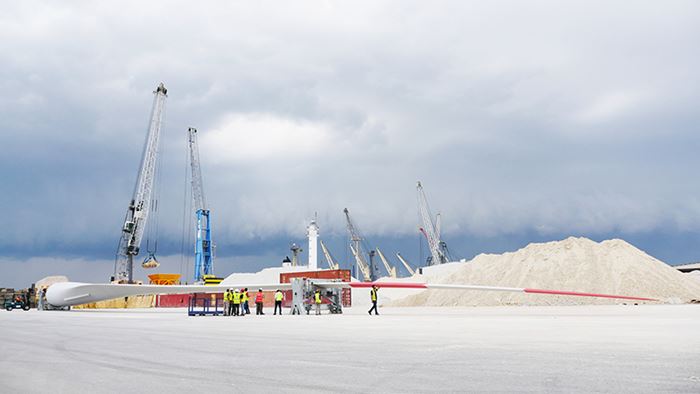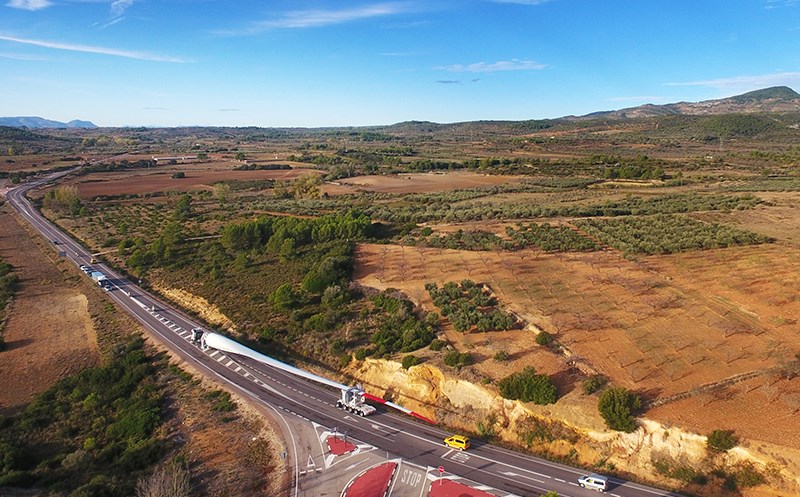LM Wind Power 73.5-meter blade arrives at Castellón Port
This is the largest wind turbine blade ever made and transported in Spain.
On October 20, the first LM 73.5 P wind turbine blade successfully arrived at Castellón Port. It is the largest blade ever produced and transported through Spain.
Destined for the Merkur offshore wind farm in Germany to power GE's Haliade 150-6 MW turbine offshore, the 73.5-meter blade began its journey at LM Wind Power's factory in Castellón, and travelled 45 kilometers (km) by road to reach the port.
Castellón Plant Director Jose Luis Grau stated: "LM Wind Power's Castellón plant was founded in 2007 starting with about 60 people and producing 37.3 meter blades. Today, the factory employs more than 620 people and produces much larger blades, up to 73.5 meters in length, for multiple customers. This is a strong example of how the wind industry in Spain continues to play a significant role as a source of economic development and job creation."
Laurent Verdier, GE's Offshore Wind business Project Office Leader stated: "The onshore assembly hub was opened some weeks ago in Eemshaven, The Netherlands, and is ready for receiving the wind turbine main components, including blades, and preparing the offshore installation works that is expected to start in February 2018."
In total, 198 LM 73.5 P blades will be shipped to the Merkur site. The first blade arrived ahead of schedule - with a 3.5-hour transport time - and the duration of the journey is expected to decrease as the drivers perfect their routine over the coming months.
Successfully transporting the longest blade ever produced in Spain required more than one year of planning and analysis of road conditions by LM Wind Power and GE, as well as active cooperation with the local police, Regional Government, the Minister of Fomento and the Castellón Port Authorities to prepare the route for this large cargo.
Merkur windfarm is located approximately 35 km north of the island of Borkum, Germany, in the North Sea, and consist of 66 turbines that will generate approximately 1,750 gigawatt hours (GWh) annually, enough clean energy to power around 500,000 homes. When completed (end 2018), Merkur will be one of Germany's largest offshore wind farms.
Related Content
-
JEC World 2023 highlights: Recyclable resins, renewable energy solutions, award-winning automotive
CW technical editor Hannah Mason recaps some of the technology on display at JEC World, including natural, bio-based or recyclable materials solutions, innovative automotive and renewable energy components and more.
-
MingYang reveals 18-MW offshore wind turbine model with 140-meter-long blades
The Chinese wind turbine manufacturer surpasses its 16-MW platform, optimizes wind farm construction costs for 1-GW wind farms.
-
RTM, dry braided fabric enable faster, cost-effective manufacture for hydrokinetic turbine components
Switching from prepreg to RTM led to significant time and cost savings for the manufacture of fiberglass struts and complex carbon fiber composite foils that power ORPC’s RivGen systems.











.jpg;maxWidth=300;quality=90)





